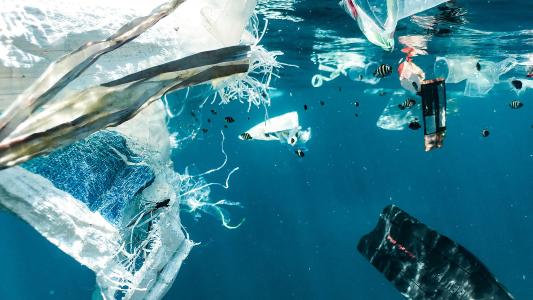Hi, I’m Will, and I have a cheese addiction. My partner regularly catches me swiping slices when I am cooking, and, like many of you, the thought of living without pizza, parmigiana or fondue is horrifying to me.
But, like many of you, I am deeply worried about climate change. So when I found out how bad cattle and dairy farming is for the planet my heart broke.
How can we continue to indulge in the glorious cheesy goodness, knowing what it is doing to the climate? Well, thanks to new cheese technology, we may no longer have to worry.
The cattle and dairy industry produces more than double the carbon emissions of shipping or aviation.
Dairy’s climate hoofprint: Before we dive into Formo, we need to appreciate the environmental cost of cattle and dairy farming.
Let’s first look at their greenhouse emissions.
In total, the global cattle and dairy industry produced 1.7 billion tonnes of carbon dioxide in 2015 — more than double the carbon footprint of shipping or aviation. To make matters worse, this figure doesn’t include the methane they produce, which is a vastly more potent greenhouse gas than CO2.
Plant-based alternatives just don’t cut it for most consumers who are used to the real deal.
But the bad news doesn’t end there. Cattle farming is one of the leading causes of deforestation in the Amazon, and the crops used to make their feed are also grown in environmentally dubious ways.
While they’ve clearly gotten a lot better in recent years, plant-based alternatives just don’t cut it for me and most consumers who are used to the real deal. So do we have to give up our delightful brie and indulgent mac and cheese to save our beautiful planet?
Maybe not!
Biotech to the rescue: Companies like Good Meat can grow everything from succulent chicken breasts to sizzling steaks in the lab. They take sample cells from a living animal and grow them in the lab. This results in cultures of fat and muscle cells. Then they assemble these new cells into the shape of the meat needed, and voila, you have real meat without the animal!
This incredible technology can produce far fewer carbon emissions and use much less land than traditional livestock farming, while having virtually the same nutrients as normal meat. This is why it is considered by many to be the future of meat.
Now a company called Formo is trying to do the same for cheese.

They use genetically modified microorganisms to produce milk protein rather than alcohol. They then “brew” them in a bath of nutrients and plant-based feed, and after it has finished, they strain out the milk proteins.
By combining these proteins with water, plant-based fats and carbs, and a pinch of salt, they have created a completely lab-grown milk. This can be processed just like cow’s milk to make all sorts of cheeses!
Formo says its process also uses orders of magnitude less land and produces far fewer carbon emissions than dairy farming. What’s more, their cheese tastes like normal cheese and has near identical nutritional value! So soon we will be able to stuff delicious, cheesy lasagna into our faces, guilt-free.

Like cultured meats, Formo is still in its very early days. This means their facilities aren’t at full industrial scale yet, and the products they make are expensive.
However, if technology like this can scale and become competitive on cost, it could not only allow cheese lovers to become far more environmentally friendly, but potentially reduce deforestation and food supply chain issues.
So it is good to know my crippling cheese addiction may soon be far more sustainable. But Formo’s incredible technology also shows just how ingenious we humans are and how a wave of new breakthrough inventions may be about to revolutionize our world and secure our planet’s future.
We’d love to hear from you! If you have a comment about this article or if you have a tip for a future Freethink story, please email us at tips@freethink.com.






